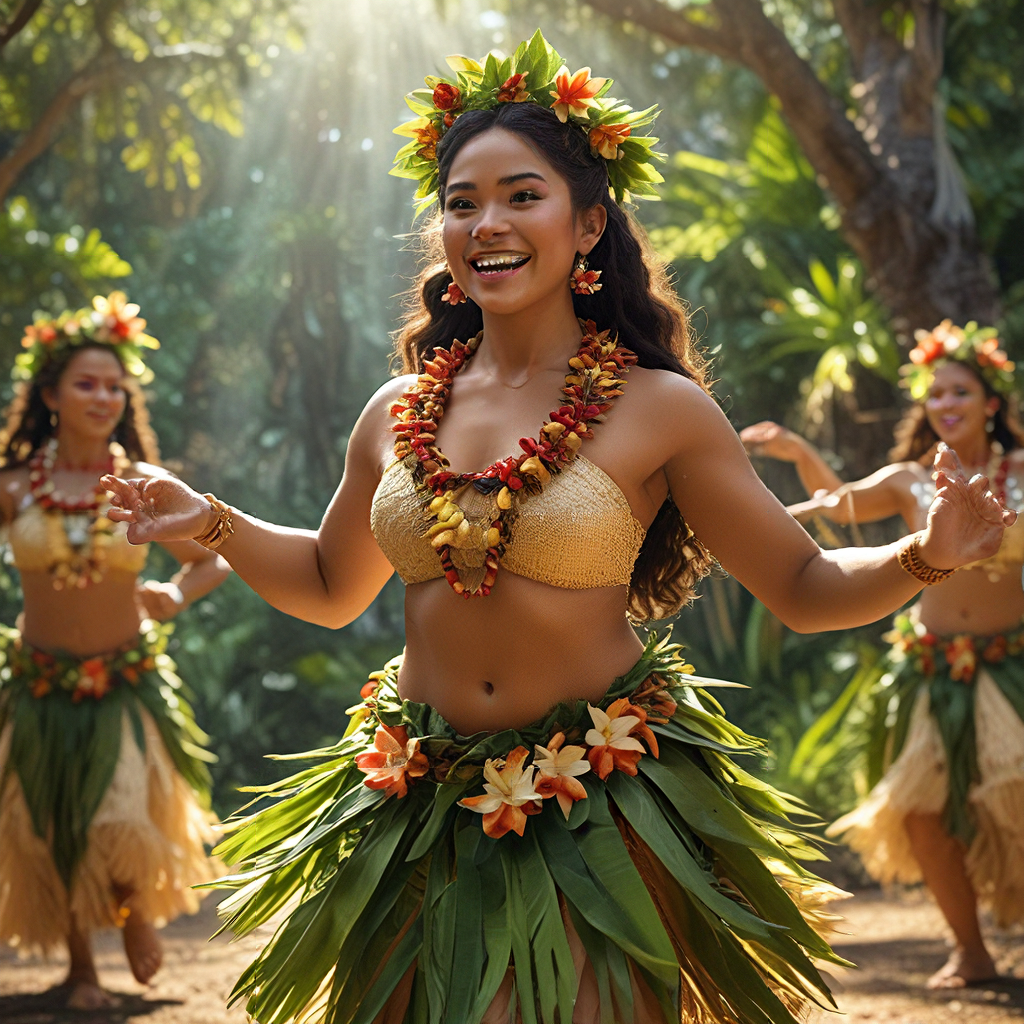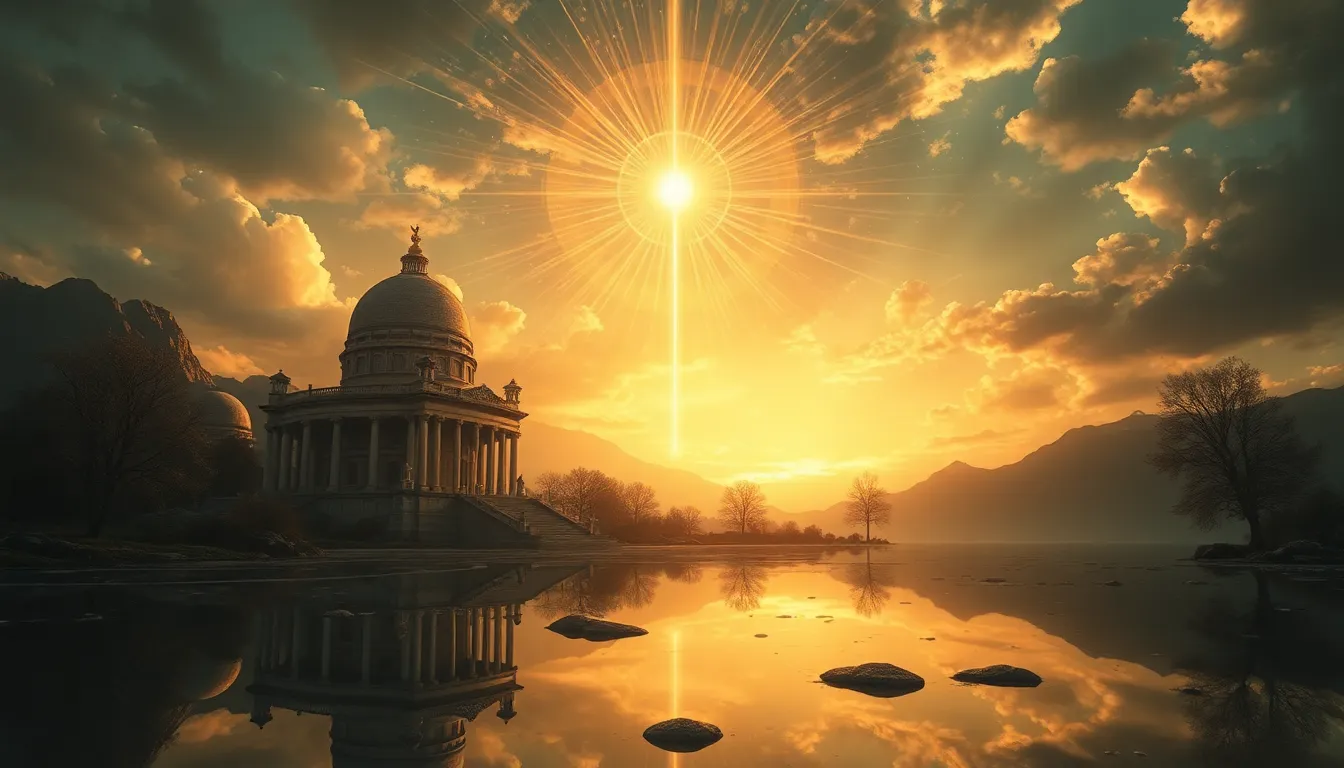Hula as a Sacred Expression in Hawaiian Mythology
Hula is more than just dancing; it's a profound expression of spirituality deeply ingrained in Hawaiian mythology and culture. For the ancient Hawaiians, hula was a sacred art form that embodied their beliefs, traditions, and connection to the natural world. It served as a conduit for communicating with the gods, preserving history, and honoring their ancestors. The movements, rhythms, and chants of hula were believed to hold immense power, capable of influencing the physical and spiritual realms.
The Origins of Hula in Creation Myths
Hawaiian mythology tells tales of the origins of hula stemming from the creation of the islands themselves. According to legend, the god Kāne, a creator deity, shaped the Hawaiian islands and breathed life into them. It is believed that Kāne, in his divine dance, inspired the first hula movements, thus connecting the very essence of hula to the creation of the islands. The hula dances themselves often depict scenes from these creation myths, like the emergence of the islands from the ocean or the arrival of the first humans. This deep connection between hula and creation reinforces the sacredness of the art form.
Hula as a Bridge Between the Physical and Spiritual Worlds
In ancient Hawaiian society, hula served as a bridge between the physical and spiritual worlds. Through intricate movements and rhythmic gestures, dancers were believed to connect with the gods, ancestors, and the forces of nature. The graceful movements of the hula were seen as a reflection of the fluidity and interconnectedness of life. The dancers' bodies acted as vessels for channeling spiritual energy, allowing them to access higher realms and communicate with the divine.
Hula as a Means of Communicating with the Gods
Hula was an essential tool for communication with the gods. Through specific movements, chants, and stories embedded within the dances, Hawaiians sought to appease, honor, and seek guidance from divine beings. Each hula had a specific purpose, whether it was to celebrate a harvest, appease a volcano goddess, or commemorate a heroic ancestor. The gods were believed to respond to the sincerity and dedication of the dancers, influencing the fate of the people and the natural world.
The Role of Hula in Storytelling and Rituals
Hula played a vital role in preserving and passing down knowledge through generations. The dances often served as living storybooks, recounting tales of ancient heroes, creation myths, and historical events. These narratives were woven into the movements, chants, and costumes, allowing for the transmission of cultural knowledge and ancestral wisdom. Hula also served as an integral part of various rituals and ceremonies, like weddings, births, and funerals. Through these rituals, hula reinforced social structures, honored the dead, and celebrated life's milestones.
Hula and the Importance of Ancestry and Lineage
The hula is intimately tied to the concept of 'āina (land) and the deep reverence for ancestors in Hawaiian culture. Each hula is connected to a specific place, lineage, or historical event, representing a shared heritage. The movements and chants often tell stories of ancestors, their deeds, and their contributions to the community. Through hula, Hawaiians connect with their past, acknowledge the sacrifices of their ancestors, and carry forward their legacy. The dance embodies the importance of remembering one's roots and honoring the lineage that binds generations together.
Hula as a Symbol of Identity and Cultural Preservation
Beyond its spiritual and historical significance, hula serves as a powerful symbol of Hawaiian identity and cultural preservation. It provides a tangible connection to the past and a vibrant expression of cultural pride. For centuries, hula has played a crucial role in safeguarding Hawaiian traditions, language, and knowledge. As the world changed, hula endured, becoming a beacon of resilience and a testament to the enduring spirit of the Hawaiian people. It is a living embodiment of their cultural heritage, reminding them of their unique identity and fostering a sense of belonging.
The Evolution of Hula in Hawaiian Mythology
Hula has not remained static; it has evolved and adapted over time. As new gods emerged and historical events unfolded, new hulas were created, reflecting the changing landscape of Hawaiian society. Some stories were passed down orally, while others were documented through chants and movements. These changes demonstrate the dynamic nature of hula and its ability to incorporate new experiences, beliefs, and perspectives. Yet, despite its evolution, hula has retained its core values and its connection to ancient traditions.
Modern Interpretations of Hula and its Mythology
While hula holds deep historical and cultural significance, modern interpretations have added new layers of meaning to this ancient art form. Contemporary choreographers and dancers have incorporated modern music, themes, and perspectives into their performances, showcasing the adaptability and relevance of hula in the 21st century. This evolution reflects the changing nature of Hawaiian society, while still grounding itself in the traditions of the past. These modern interpretations often challenge traditional norms, explore new ideas, and push the boundaries of the art form, ensuring that hula remains a vibrant and dynamic expression of Hawaiian culture.
The Enduring Power of Hula in Contemporary Hawaiian Culture
Today, hula continues to play a vital role in contemporary Hawaiian culture. It is not just a dance; it is a powerful force for preserving traditions, promoting cultural pride, and fostering a sense of community. From school classrooms to international stages, hula remains a powerful symbol of Hawaiian resilience and cultural heritage. It serves as a bridge between generations, connecting the past, present, and future of the Hawaiian people. Through hula, the spirit of ancient Hawaiians continues to dance, reminding the world of the enduring power of cultural traditions and the importance of maintaining a vibrant connection to one's heritage.
Frequently Asked Questions
What is the most important takeaway about the role of hula in Hawaiian mythology?
The most important takeaway is that hula is more than just a dance; it is a sacred art form deeply rooted in Hawaiian mythology and culture. It reflects their beliefs, traditions, and connection to the natural world.
How is hula connected to ancient Hawaiian creation myths?
Creation myths tell the story of how the Hawaiian islands were formed, and hula is believed to have originated from the divine dance of the creator god Kāne. This reinforces the sacredness of the art form and its connection to the islands' very essence.
How does hula serve as a bridge between the physical and spiritual worlds?
Through intricate movements, rhythmic gestures, and chants, dancers are believed to connect with the gods, ancestors, and the forces of nature. The graceful movements of hula are seen as a reflection of the fluidity and interconnectedness of life.
What is the role of hula in preserving Hawaiian culture?
Hula serves as a powerful symbol of Hawaiian identity and cultural preservation. It provides a tangible connection to the past and a vibrant expression of cultural pride, safeguarding Hawaiian traditions, language, and knowledge.
How has hula evolved in contemporary times?
While hula holds deep historical and cultural significance, modern choreographers and dancers have incorporated modern music, themes, and perspectives into their performances, showcasing the adaptability and relevance of hula in the 21st century. This evolution reflects the changing nature of Hawaiian society while still grounding itself in the traditions of the past.


